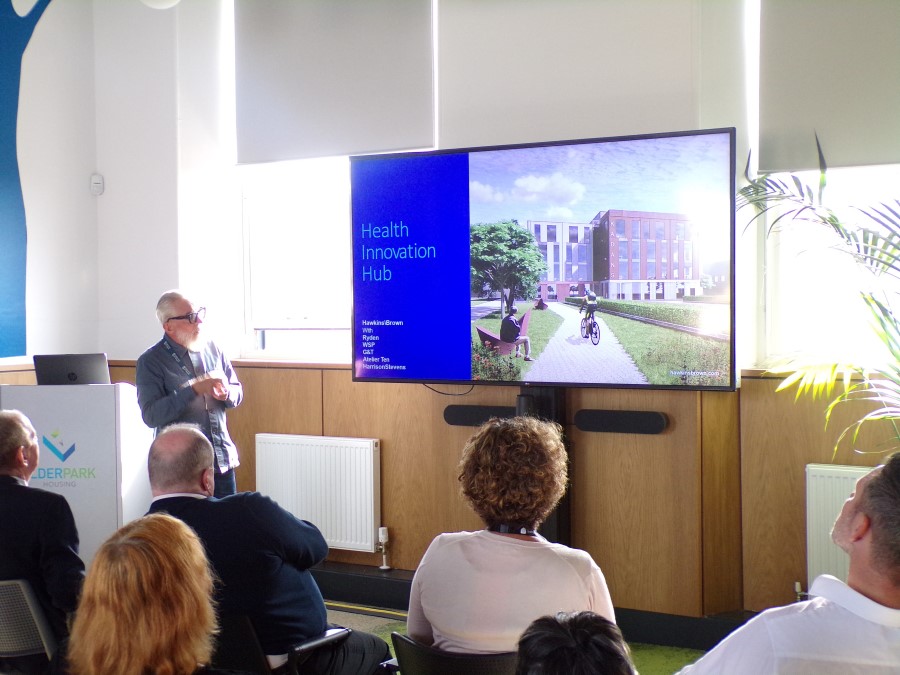University of Glasgow health innovation hub to boost Govan regeneration efforts

GRID programme director Benny McLaughlin
The University of Glasgow was praised this week for sharing its multi-million vision to supplement the ongoing growth of Govan as a thriving place for living and working.
Community groups – including local housing providers Linthouse, Govan and Elderpark – were told of the University’s ambitious plans at a specially-convened event.
The University is an integral partner in what’s known as the Glasgow Riverside Innovation District known as (GRID) spanning both sides of the Clyde.
This multi-million initiative is massive in its scope and will see the creation by the University of a state-of-the-art Health Innovation Hub close to Queen Elizabeth University Hospital and built on derelict land.
The four-storey, 6000 square metre hub will bring jobs to Govan with a firm focus, where possible, on employing local labour in its construction and delivery. In July 2020, the University announced it had been awarded £38 million to create the ‘Precision Medicine Living Lab’ — an internationally leading project focused on translating cutting-edge science and innovation into a real world clinical setting. It is through this that the Health Innovation Hub is being developed.
Precision medicine can best be described as looking at the genetics, environment, and lifestyle of a person in order to select treatments that could work best for them and trail-blazing research is expected at the Hub.
The University places strong emphasis on keeping the community informed of its plans with local groups attending the information event held at the offices of Elderpark.
It was addressed by GRID programme director Benny McLaughlin accompanied by colleague Grainne Filan.
Among the 30 people attending in addition to the housing associations were community council representatives, regeneration group Central Govan Action Plan and Govan Workspace plus local Glasgow City councillor Stephen Dornan.
A spokesperson for the three housing associations said: ”We applaud the willingness of the University of Glasgow to engage with Govan organisations whose local knowledge is invaluable when it comes to bringing innovation and regeneration to our community.
“The economic and physical regeneration of the Govan area is vitally important to the people we serve as housing associations. This Hub undoubtedly has transformational benefits for the local community.”
It is anticipated the flexible nature of the design for the building will lend itself – notably on the ground floor – to being accessible to the community.
Meanwhile, the regeneration of Govan is in full swing with all three housing associations having recently built or are in the process of building many new homes which will have added over 200 affordable homes to the area.
In other regeneration developments, a much-anticipated new bridge linking Govan to Partick is to be created while the iconic Clyde steamer TS Queen Mary - out of action since the 1970s and berthed at Pacific Quay - is being restored to sail once again creating a tourism focal point in the community.
When funding for the project was initially announced, University of Glasgow principal, Professor Sir Anton Muscatelli said: “Glasgow and Scotland are world-leaders in the field of precision medicine — and this will turn our research and innovation excellence into clinical practices, offering an unparalleled opportunity to deliver benefits for patients and savings for the NHS.”





















